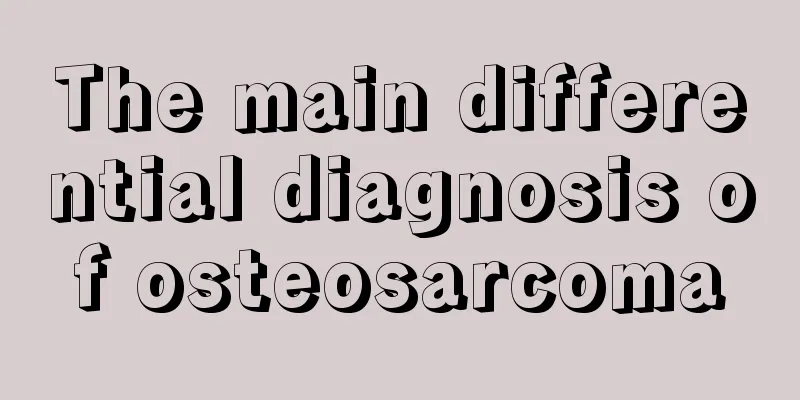The main differential diagnosis of osteosarcoma

|
Osteosarcoma is an orthopedic tumor disease that cannot be ignored. Once friends find that their limbs often experience pain or redness and swelling, they should be alert to whether they have osteosarcoma. During the medical treatment process, the scientific differential diagnosis of osteosarcoma is of great help in selecting later treatment plans. So what are the main differential diagnoses of osteosarcoma? Let's learn about it together. The clinical manifestations of chondrosarcoma are not specific. They are often manifested as slowly developing pain. Sometimes a mass can be felt. When the tumor involves the nerve roots, cauda equina, or spinal cord, it can cause corresponding nerve damage. When diagnosing central chondrosarcoma, clinical and imaging data are more important than other data. Cartilage tumors with the same histological manifestations can be benign or malignant, and must be considered in terms of age, location, symptoms, imaging, bone scan, CT, and other characteristics. From a diagnostic perspective, chondrosarcomas can be divided into two categories: low-grade and medium-grade tumors and high-grade tumors. How is chondrosarcoma diagnosed? Low-grade or borderline chondrosarcomas are very similar to benign enchondromas, and their diagnosis cannot be based solely on pathological examinations, but requires the support of clinical evidence. However, grade 2 and grade 3 chondrosarcomas can be diagnosed independently by microscopy. In another extreme case, the lesion is severely calcified and appears as a dense opaque area, which is difficult to distinguish from osteoblastic lesions. MRI and CT can help clarify the extent of chondrosarcoma invasion in bone and soft tissue. In addition, chondrosarcoma appears as a low signal on MRI T1-weighted images and a high signal on T2-weighted images. Although it lacks specificity for diagnosing chondrosarcoma, this MRI manifestation can help determine the nature of the cartilaginous lesions for lesions that appear as punctate calcifications on plain films. CT can help detect punctate calcifications that cannot be found on plain films and MRI. In multiple enchondromas and chondromatosis, the enchondromas can grow to a considerable size and continue to grow in adulthood, characterized by actively proliferative histological manifestations. Because they have a considerable chance of transforming into central chondrosarcomas, when the symptoms and imaging of chondromatosis change in adulthood, the possibility of central chondrosarcoma should be suspected, and a biopsy should be performed immediately to confirm the diagnosis. Only when we understand the main differential diagnosis of osteosarcoma can we help people get a timely diagnosis and take timely treatment measures when they are sick, so as to avoid missing the best time for treatment and bringing too much harm to osteosarcoma patients. It is crucial to stay away from osteosarcoma as early as possible. |
<<: Various diagnostic methods for osteosarcoma
>>: What tests should be done for osteosarcoma
Recommend
Can I use a mosquito killer lamp if I have a baby?
The hot summer not only brings people the scorchi...
Can rock sugar and sesame cure cough
When a person's throat feels uncomfortable, i...
The overall process of fracture healing
I believe that every sports enthusiast knows the ...
Are multiple small cysts in the liver serious?
Multiple small cysts in the liver are a relativel...
Can applying distilled water on the face cure allergies?
It is said that applying distilled water to the f...
How to diagnose small cell lung cancer
How to diagnose small cell lung cancer? As the en...
Is acute conjunctivitis a pink eye disease?
Acute conjunctivitis is a common eye disease, whi...
The difference between leek and chives
Chives and leeks are both vegetables we often eat...
White blood cell count is high
Various types of diseases can cause great harm to...
I always get acne on my face_Why do I always get acne
Many men have oily skin and have a lot of acne on...
What to do if toothache is caused by rotten teeth
Rotten teeth can definitely cause tooth inflammat...
Under what circumstances is calcium supplementation needed?
When it comes to calcium supplementation, many pe...
What are the treatments for Achilles tendinitis?
Achilles tendonitis is often caused by improper e...
Methods for preventing complications in patients with lymphoma
What are the methods for preventing complications...
What are the prevention methods for glioma
Glioma is a malignant tumor that is difficult to ...









